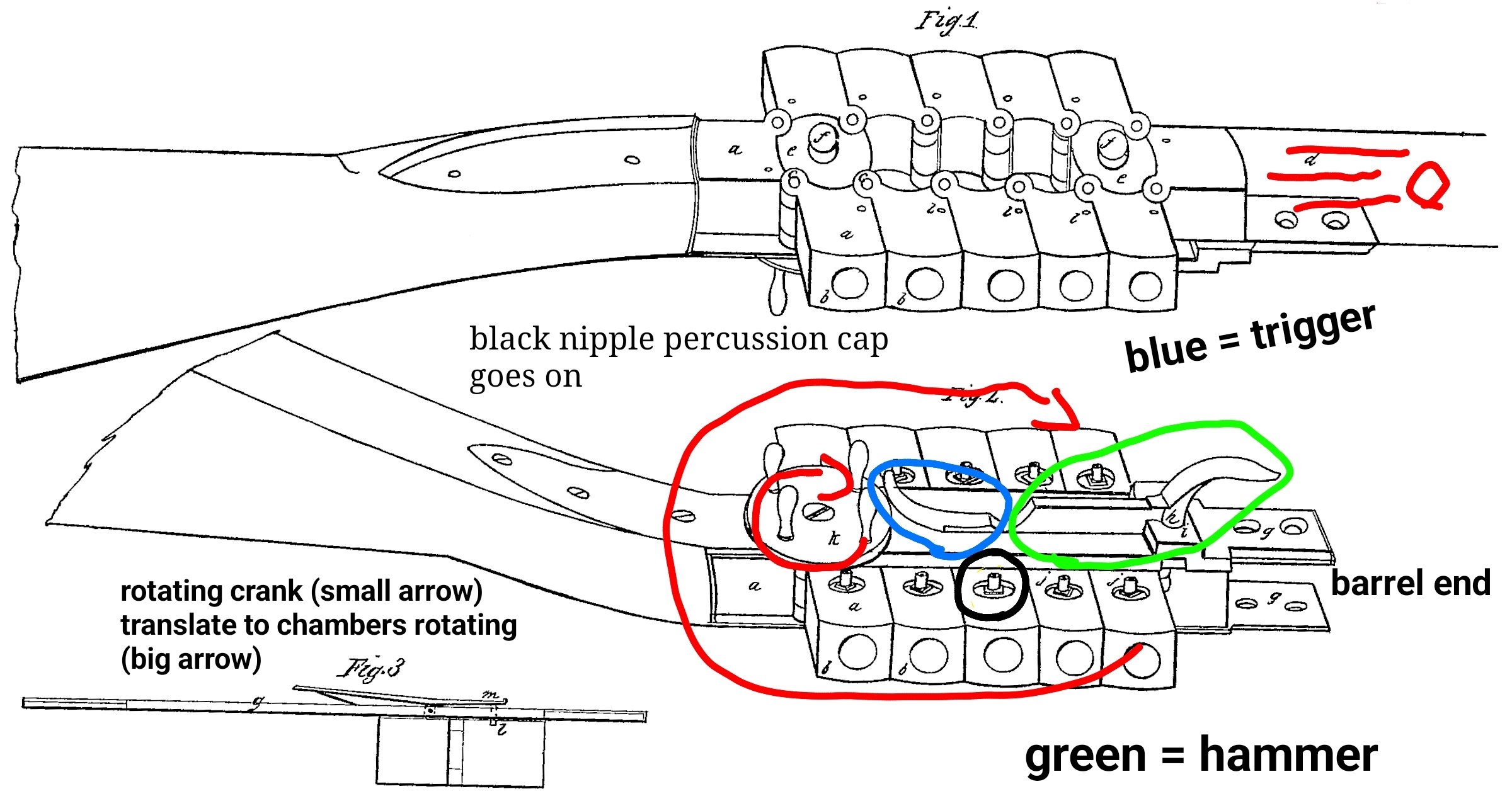- cross-posted to:
- [email protected]
- cross-posted to:
- [email protected]
This 12-shot .40 caliber repeater was designed by Epenetus A. Bennett and Frederick P. Haviland…

The repeater required cranking a rotating disc on the underside of the receiver to advance the rotating rectangular chambers. Each brass chamber was loaded with powder and ball and capped individually.

Despite its many advances, this circa 1838 firearm relied on under-hammer ignition, a chancy proposition when dealing with percussion caps. Fewer than 10 examples were ever produced, making this a truly rare gun.

U.S. Patent No. 603
I’m going to need a video of someone operating this stat.
Didn’t think there’d be a video of one but found this video skip to 0:38
https://youtu.be/j-VfNhpcb4k?si=
Unfortunately he doesn’t actually use it because it’s a historical artifact in a museum.
Fascinating, I could definitely see how that gun failed to fire a lot.
It looks like what a 19th Century railgun would look like.
From the headline photo only I couldn’t tell how this worked. Cooling looking if nothing else
Shitty ms paint depiction of how I think it works:

Not sure I understand how it’s loaded.
Would you have 10 chambers packed with ball and powder, having an exposed percussion cap hanging off the bottom? Seems very prone to misfiring.
Or was there some way to prevent the charge from spilling out and the caps from being bumped?
A revolver with a horizontal transport of separate chambers… Clever idea although I guess it has too many moving parts to be reliable.




